|
ID |
Nickname |
Country / City |
Languages |
Taxonomies |
Comment |
Project / Group |
Map |
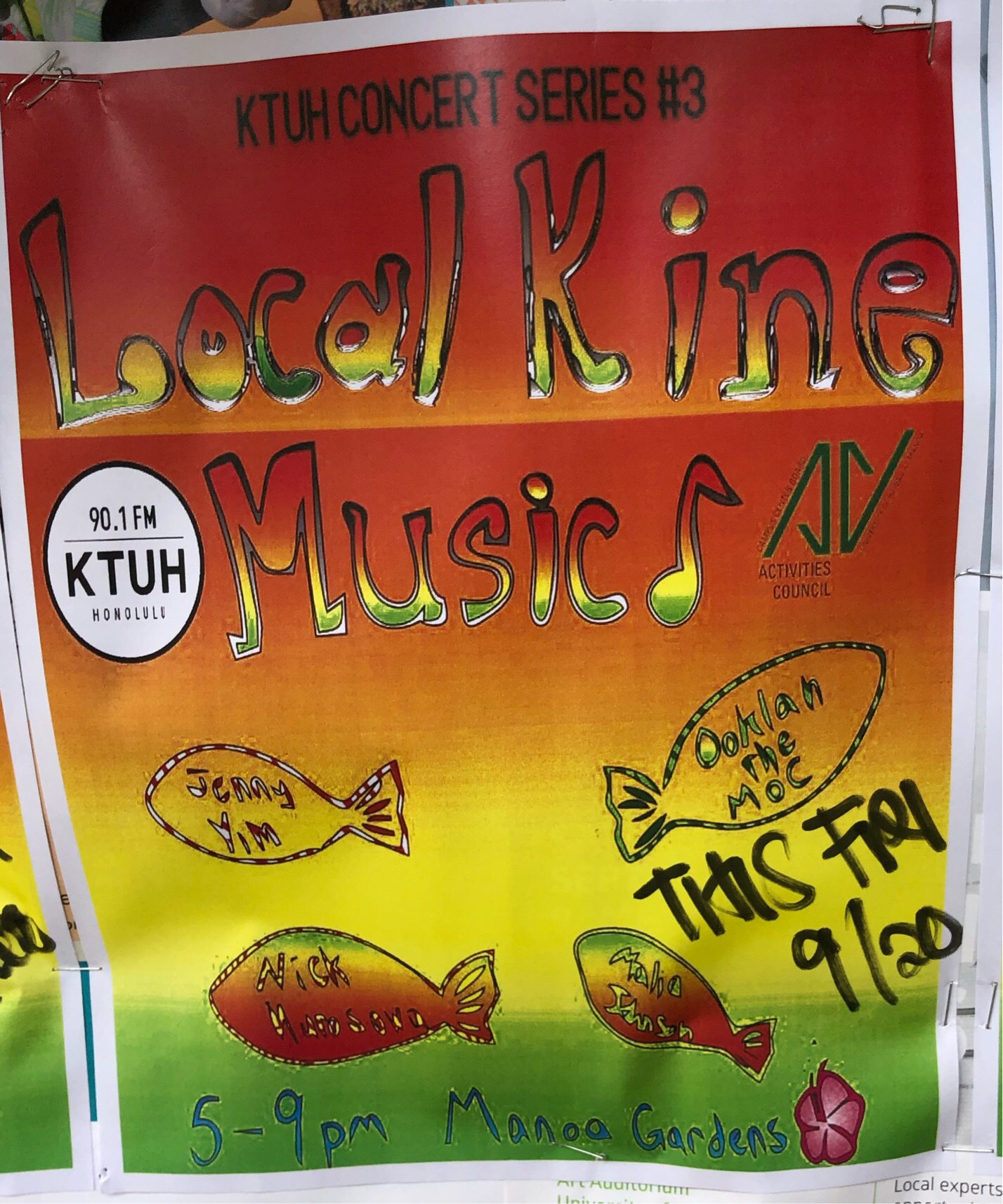
|
24870
|
|
アメリカ合衆国
Honolulu
|
|
|
I found this flyer on the bulletin board on campus. I suppose this is expressive sign because they use “kine” to share the local identity. SS
|
Multilingual Hawaiʻi
|
|
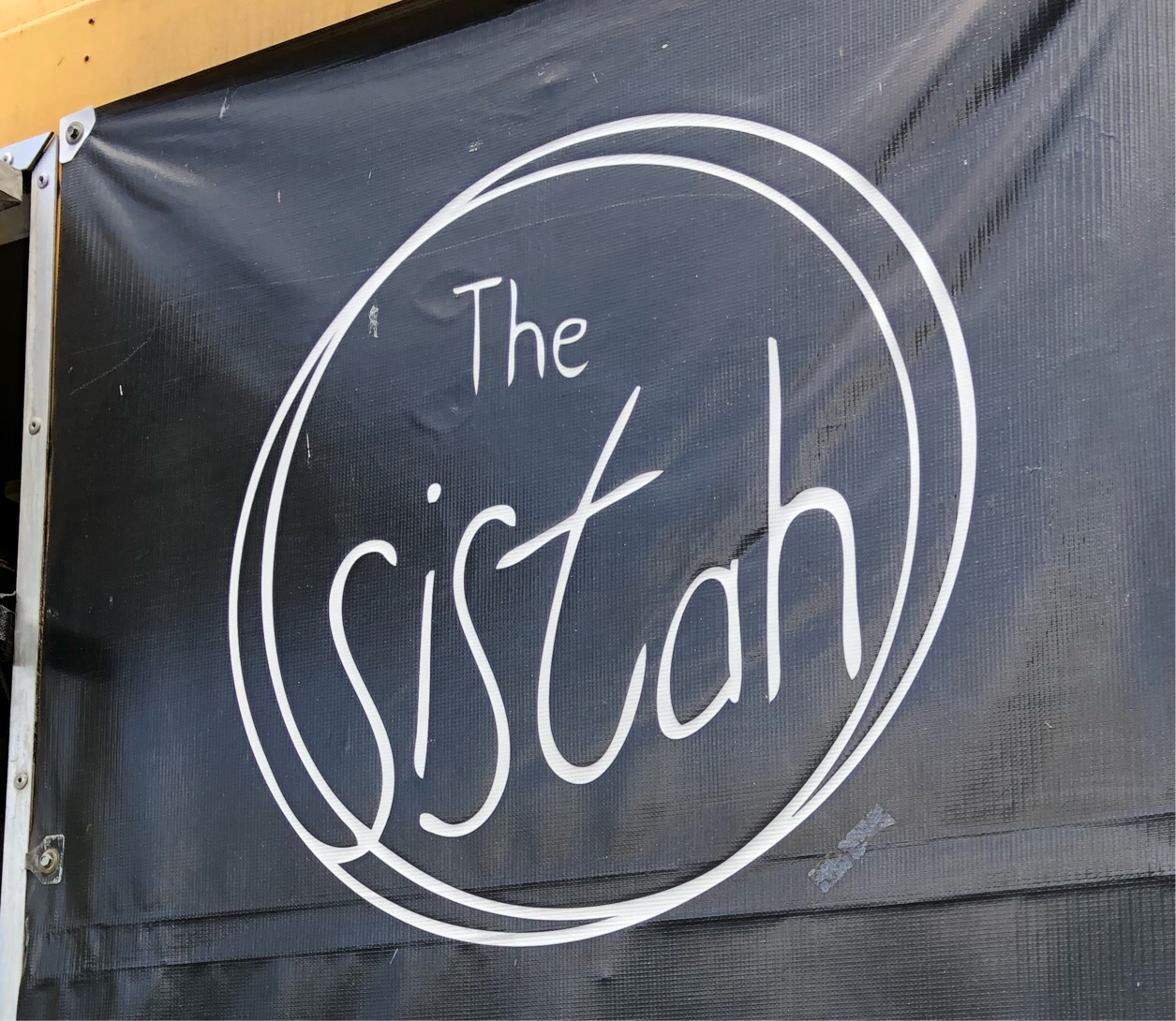
|
25081
|
|
アメリカ合衆国
Honolulu
|
|
|
This is a name of the food truck in the campus. “ sistah” means “sister”. I think this is symbolic-authentic to share a sense of “local”.
|
Multilingual Hawaiʻi
|
|
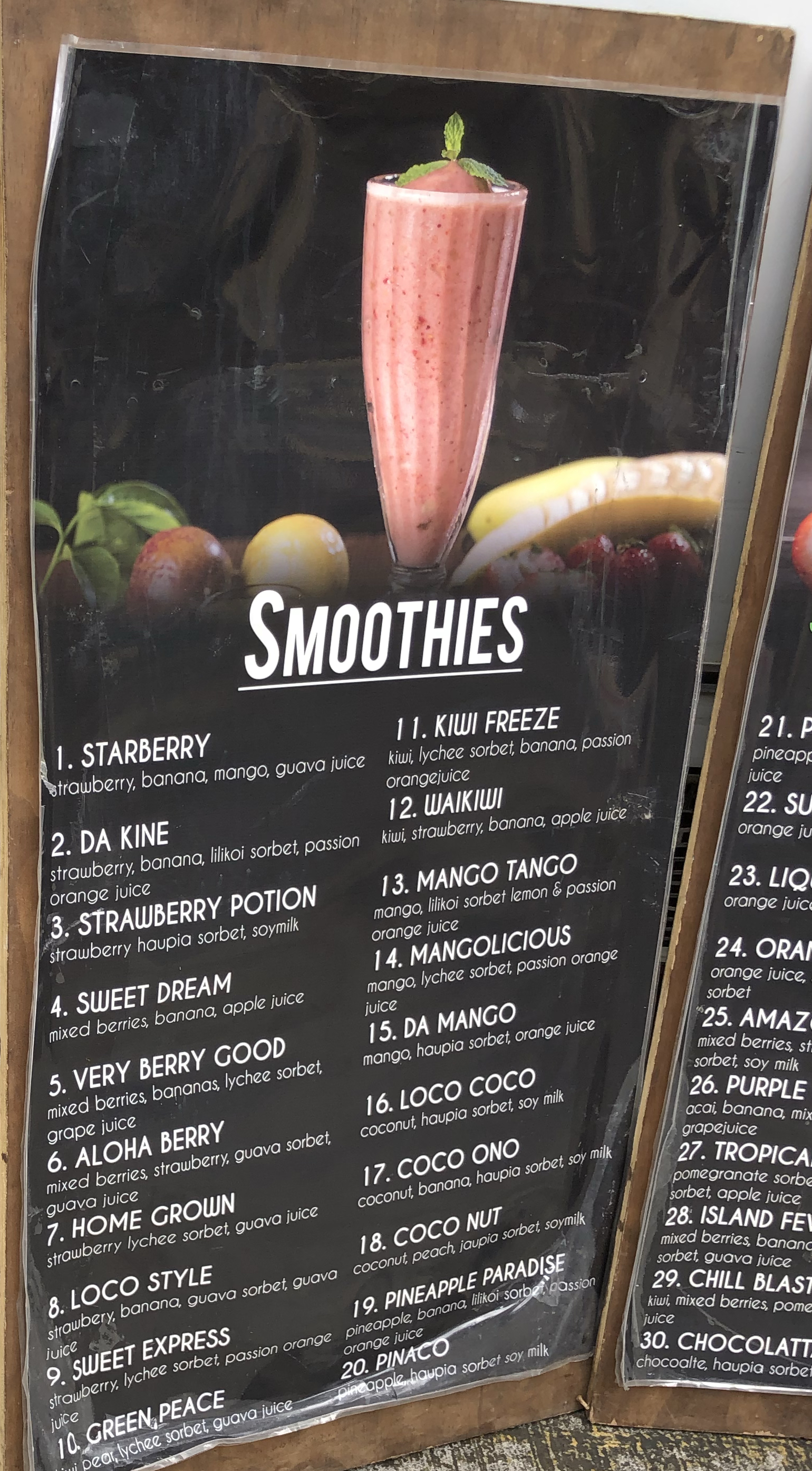
|
25082
|
|
アメリカ合衆国
Honolulu
|
|
|
This is a menu of the food truck in our campus. Basically it is written in English, but you can find some Pidgin words such as “DA KINE”. This is symbolic-authentic. SS
|
Multilingual Hawaiʻi
|
|
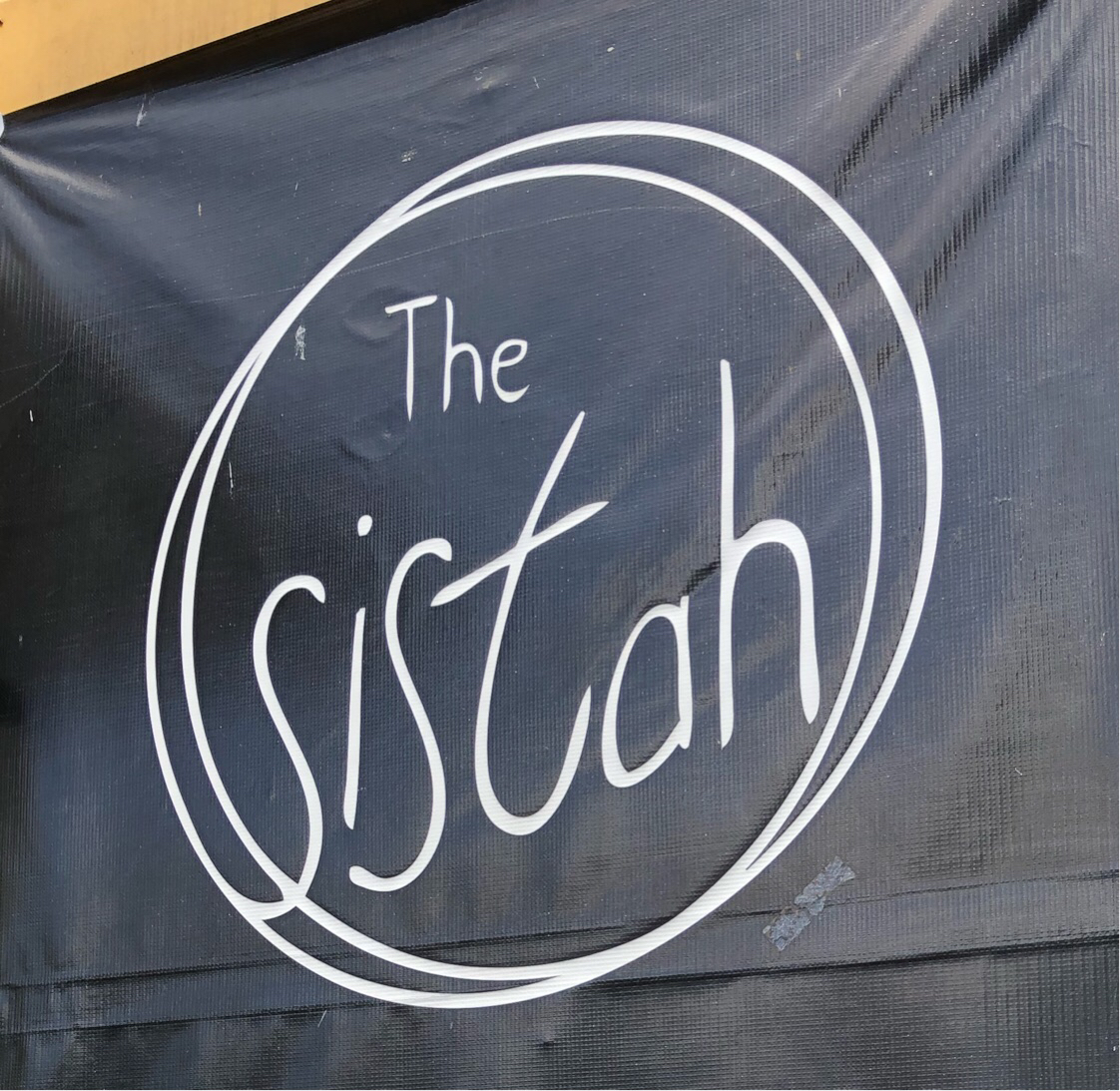
|
25083
|
|
アメリカ合衆国
Honolulu
|
|
|
This is a name of the food truck in the campus. “Sisters” means “sister” in English. This is symbolic-authentic to share a sense of “local”. SS
|
Multilingual Hawaiʻi
|
|
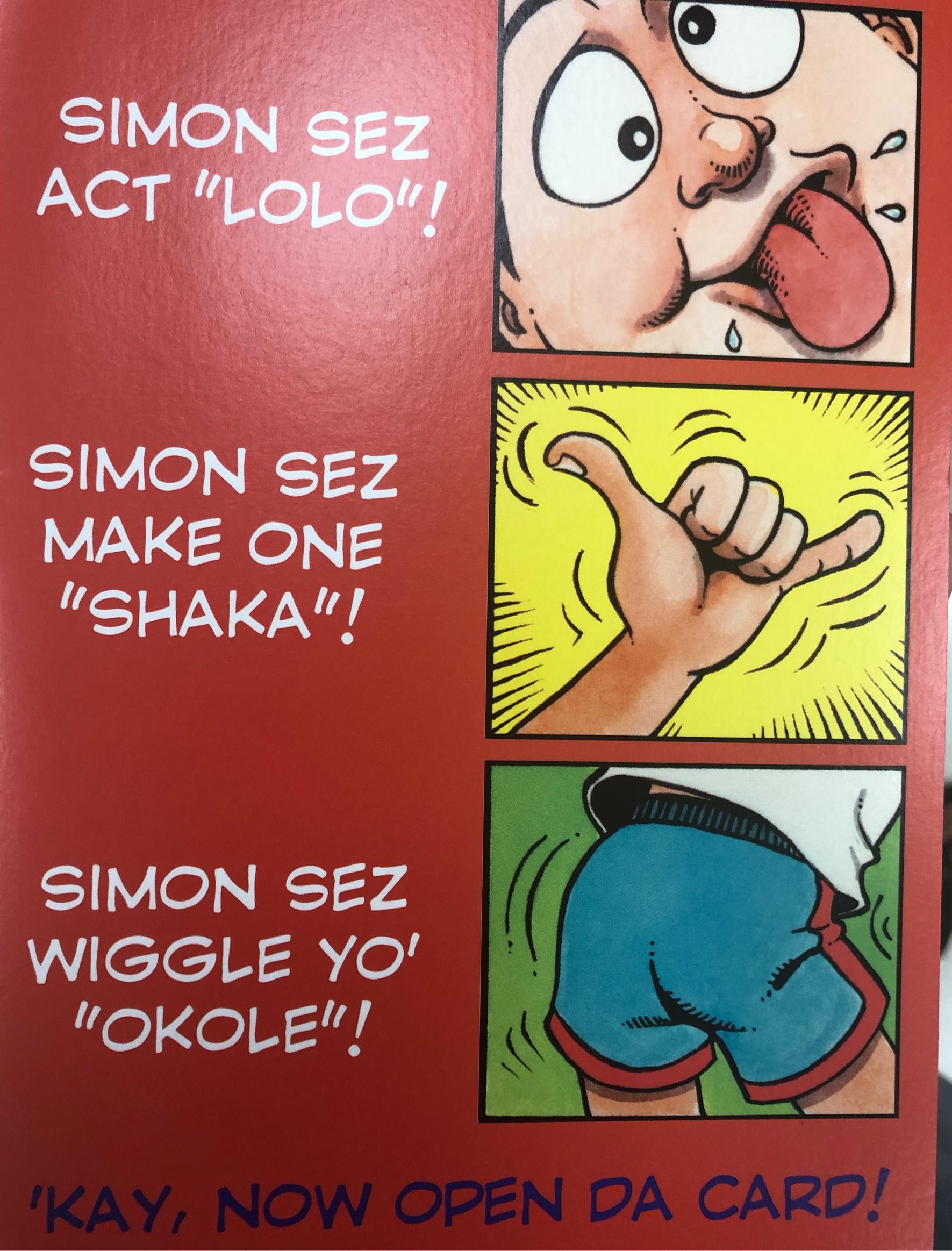
|
25088
|
|
United States
Honolulu
|
|
|
Act “lolo” can be translated to act crazy, make one “Shaka”, which means “hang loose” or the hand symbol associated with it, and wiggle yo “okole” meaning shake your butt. Lastly, “Kay, now open da card!” Translates to Okay, now open the card! This is authentic-symbolic. J.A.S
|
Multilingual Hawaiʻi
|
|

|
42496
|
|
United States
Honolulu
|
|
|
(SP) (photo taken while riding The Bus) this is a semipermanent paper sign taken while riding one of Honolulu’s Buses (transportation domain). It uses a heading of “Mālama kūpuna” and then the English translation of the phrase directly below it, which indicates that this sign’s audience is both Locals and tourists alike. Hawaiian may have been used to appeal to Locals’ value of taking care of those older than them, and to reflect a strong sense of “Hawaiian values”.
|
Multilingual Hawaiʻi
|
|
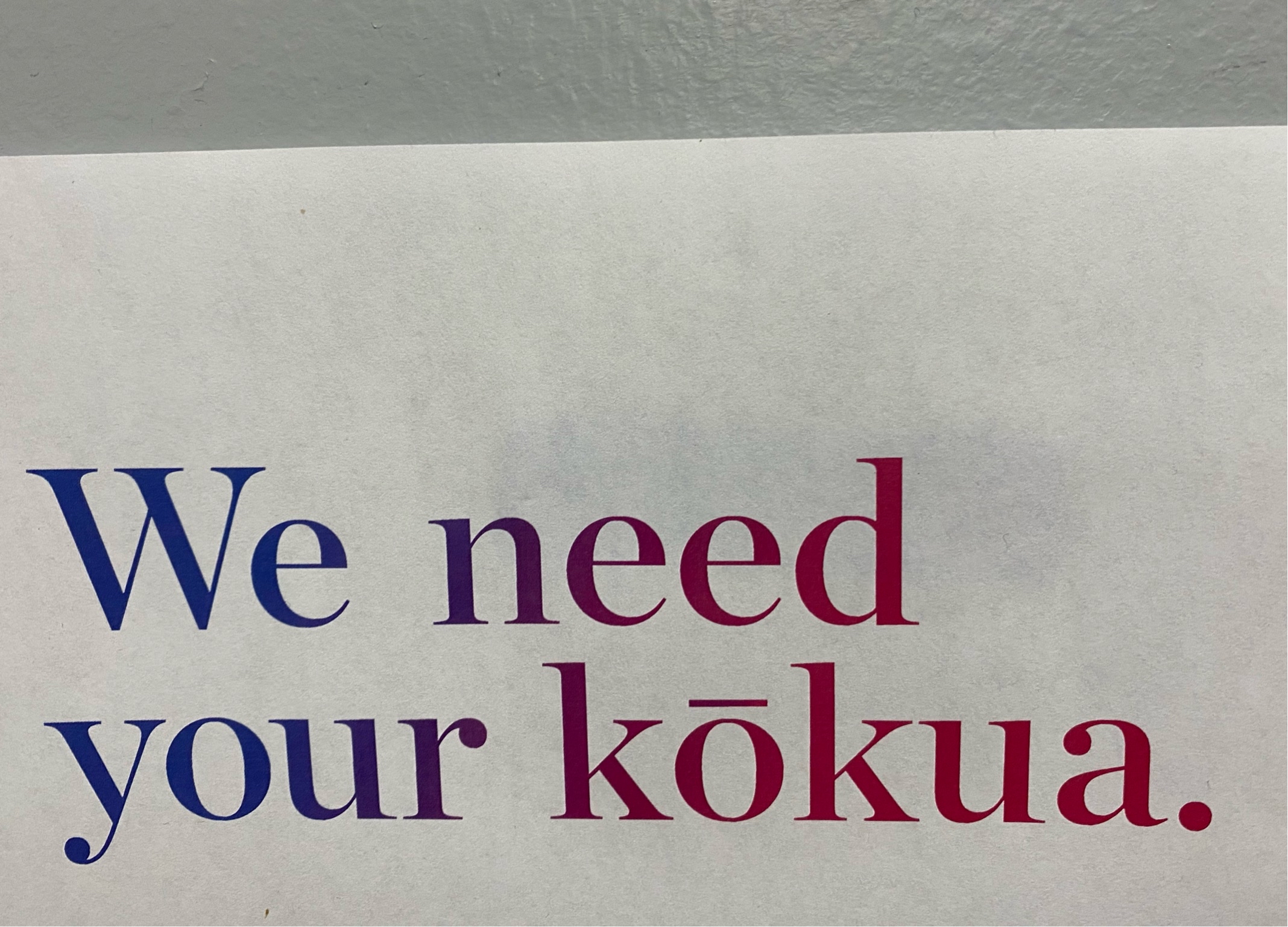
|
46080
|
|
United States
Honolulu
|
|
|
EL-S Checkip #2 : Languages used on this sign is English and Hawaiian. Languages presented all in the same way except Kokua is underlined. I think to emphasize kokua. The audience is general public. The domain is the airport. The sign is telling people we need your help. The sign is here to just let people know we need your help, it could be talking about anything.
|
Multilingual Hawaiʻi
|
|
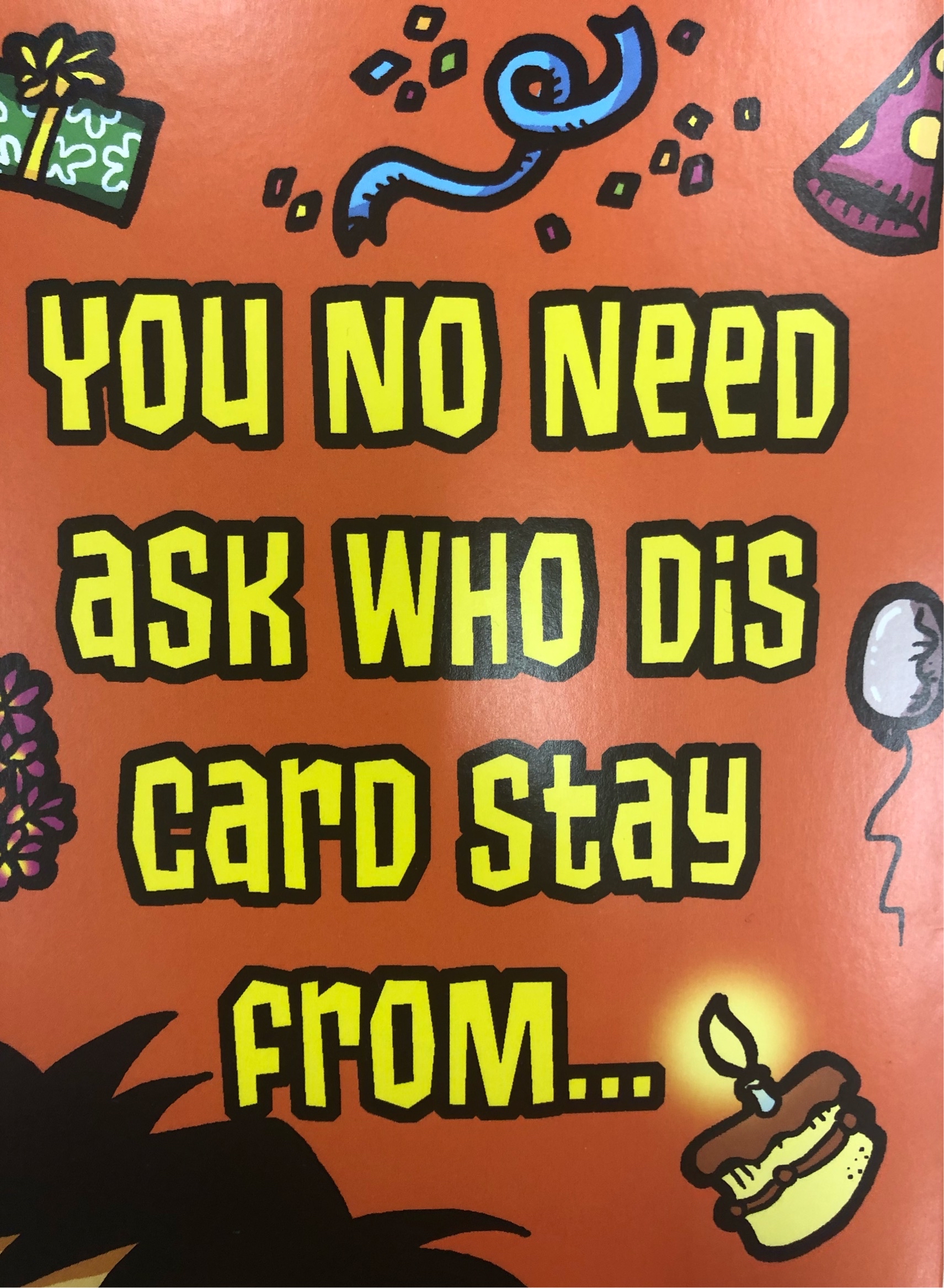
|
25089
|
|
United States
Honolulu
|
|
|
Implies you already know who gave you this card. Authentic-symbolic. J.A.S
|
Multilingual Hawaiʻi
|
|
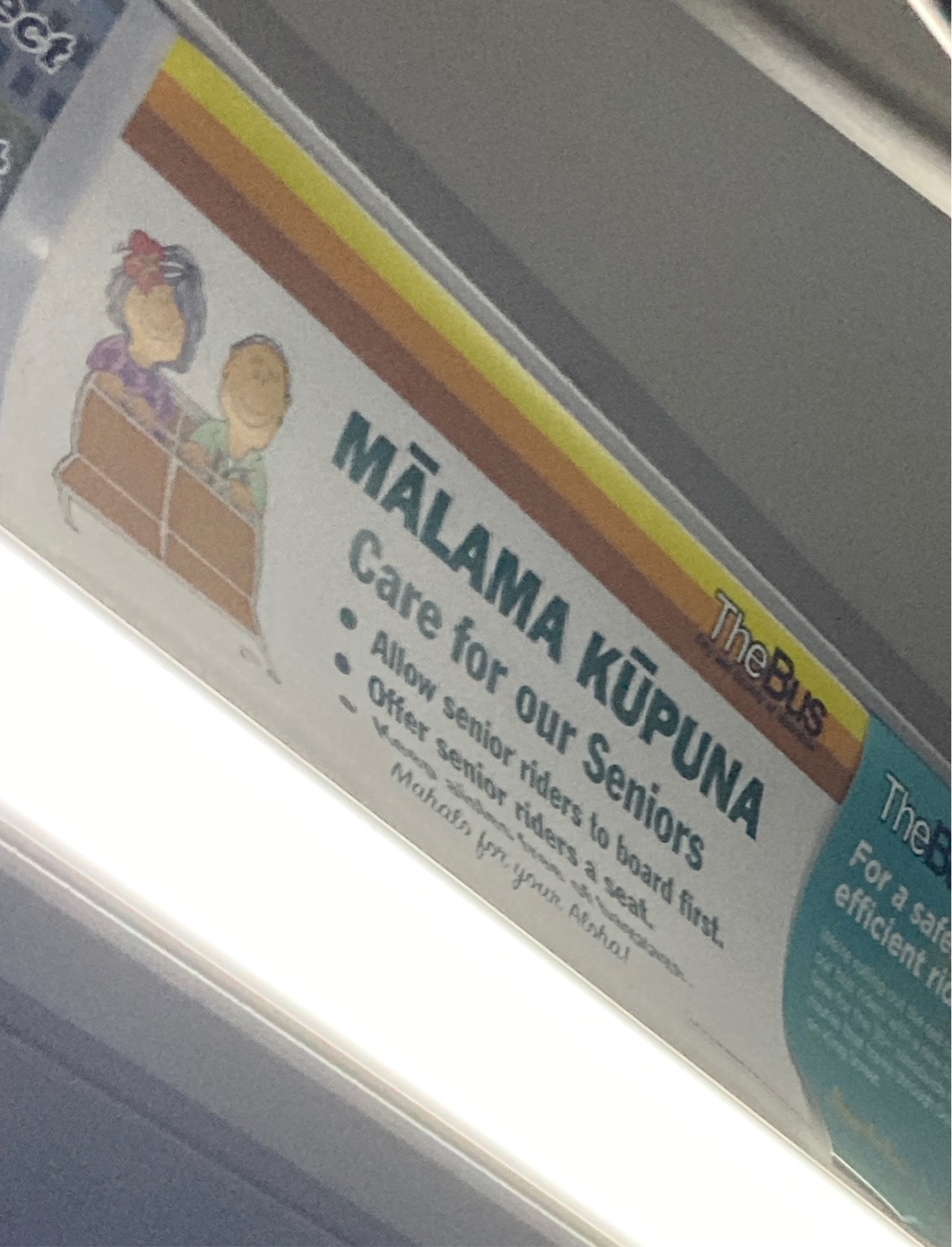
|
42497
|
|
United States
Honolulu
|
|
|
The domain is in a safety/warning, used to tell people to let seniors take the front seats. The sign is meant for both tourists and speakers of hawaiian, given that the translation is right below it
|
Multilingual Hawaiʻi
|
|
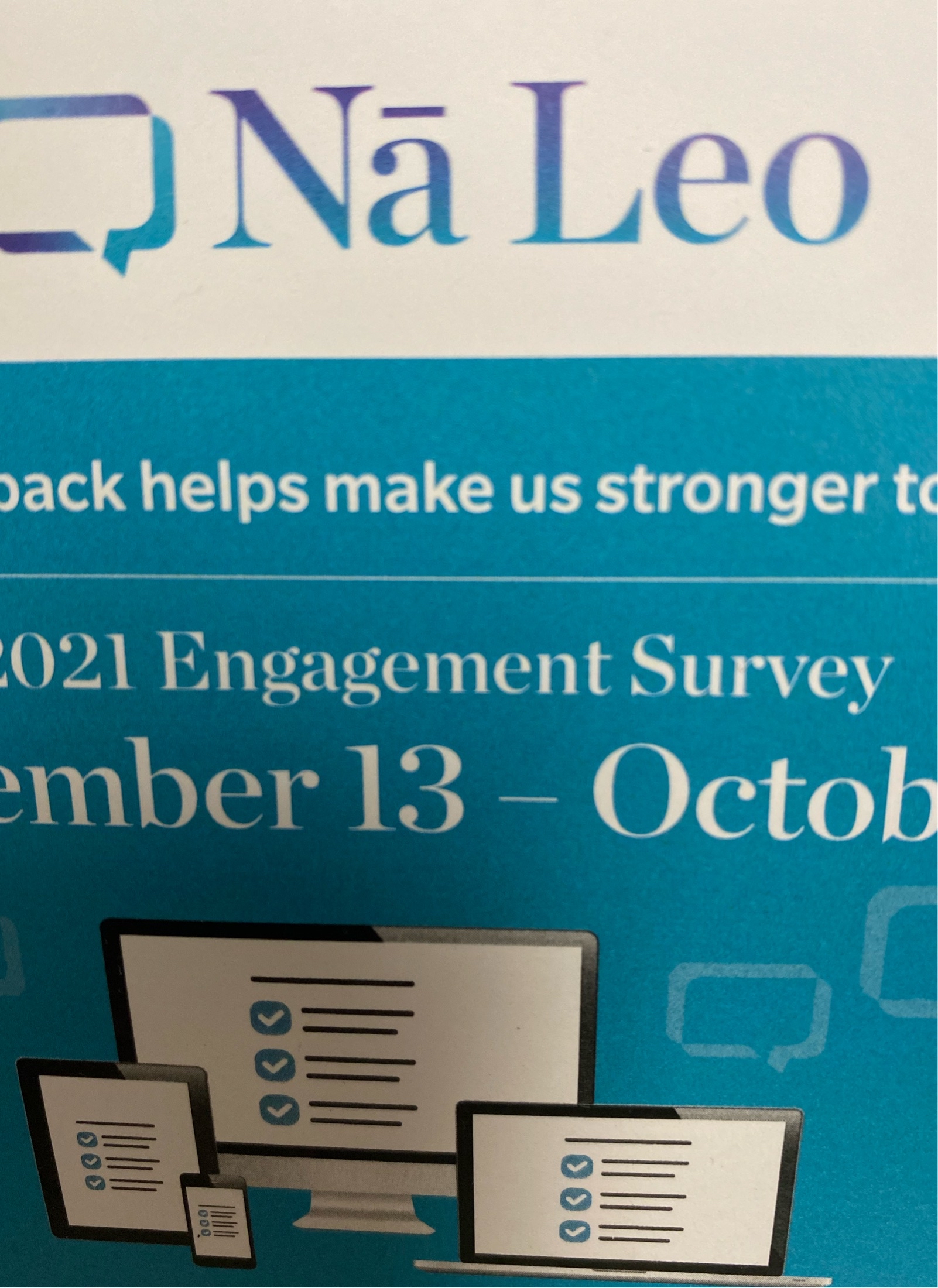
|
46081
|
|
United States
Honolulu
|
|
|
EL-S Check up #2 : Hawaiian and English are being used. The Hawaiian words are bigger than the English words. I think it’s to let people know what the survey is named. The audience is probably people coming in from the mainland to talk about their flight experience. The domain is work. The sign is trying to get people engage into a survey.
|
Multilingual Hawaiʻi
|
|
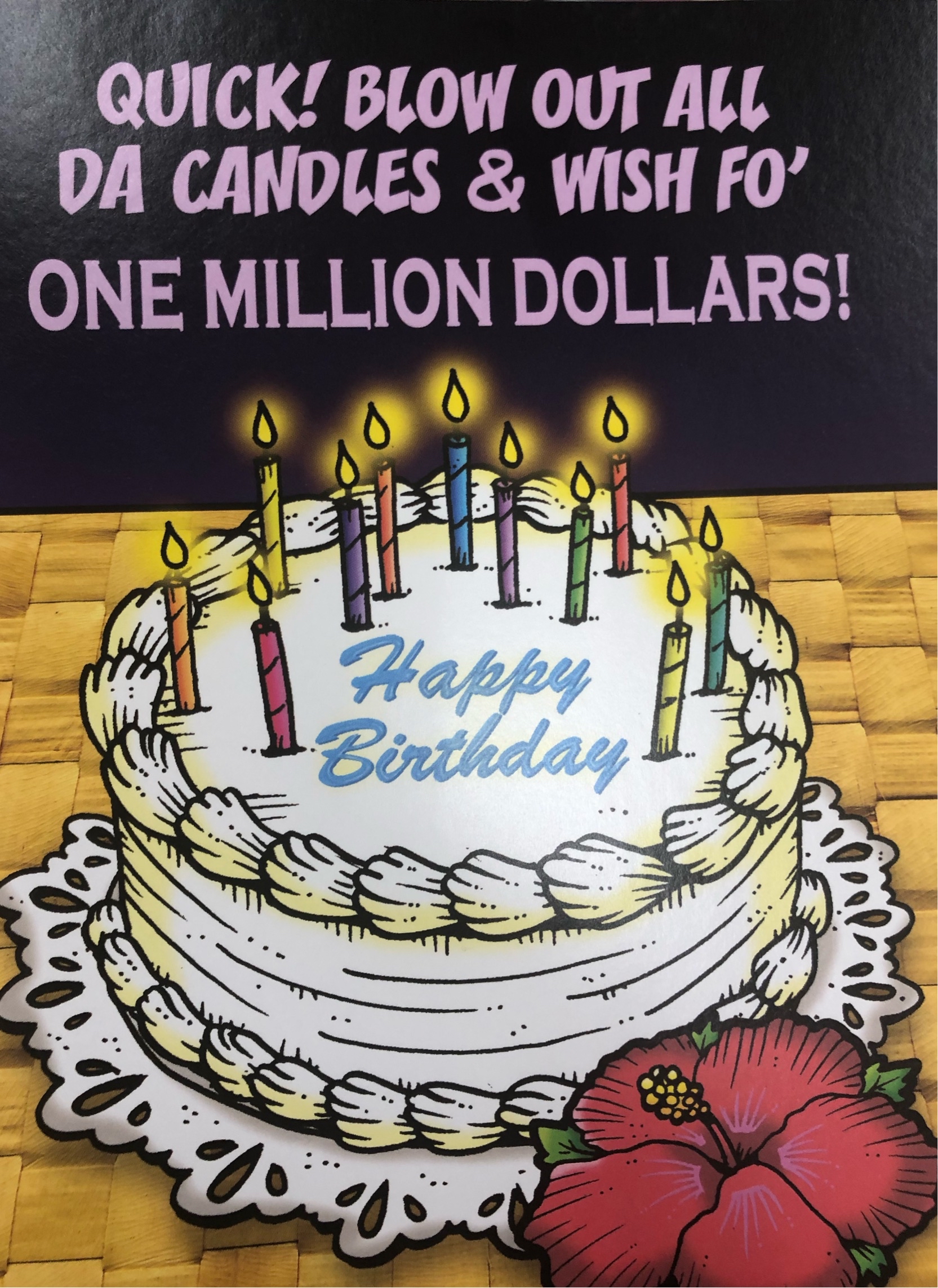
|
25090
|
|
United States
Honolulu
|
|
|
Birthday card. Symbolic-authentic. J.A.S.
|
Multilingual Hawaiʻi
|
|

|
46082
|
|
United States
Pearl City
|
|
|
EL-S Checkup #2 : Pidgin is being used. All of the fonts are mostly the same size. The audience is for those who are grocery shopping. The domain is a grocery store. The sign is telling the people what kind of food that is being sold to them for what price.
|
Multilingual Hawaiʻi
|
|
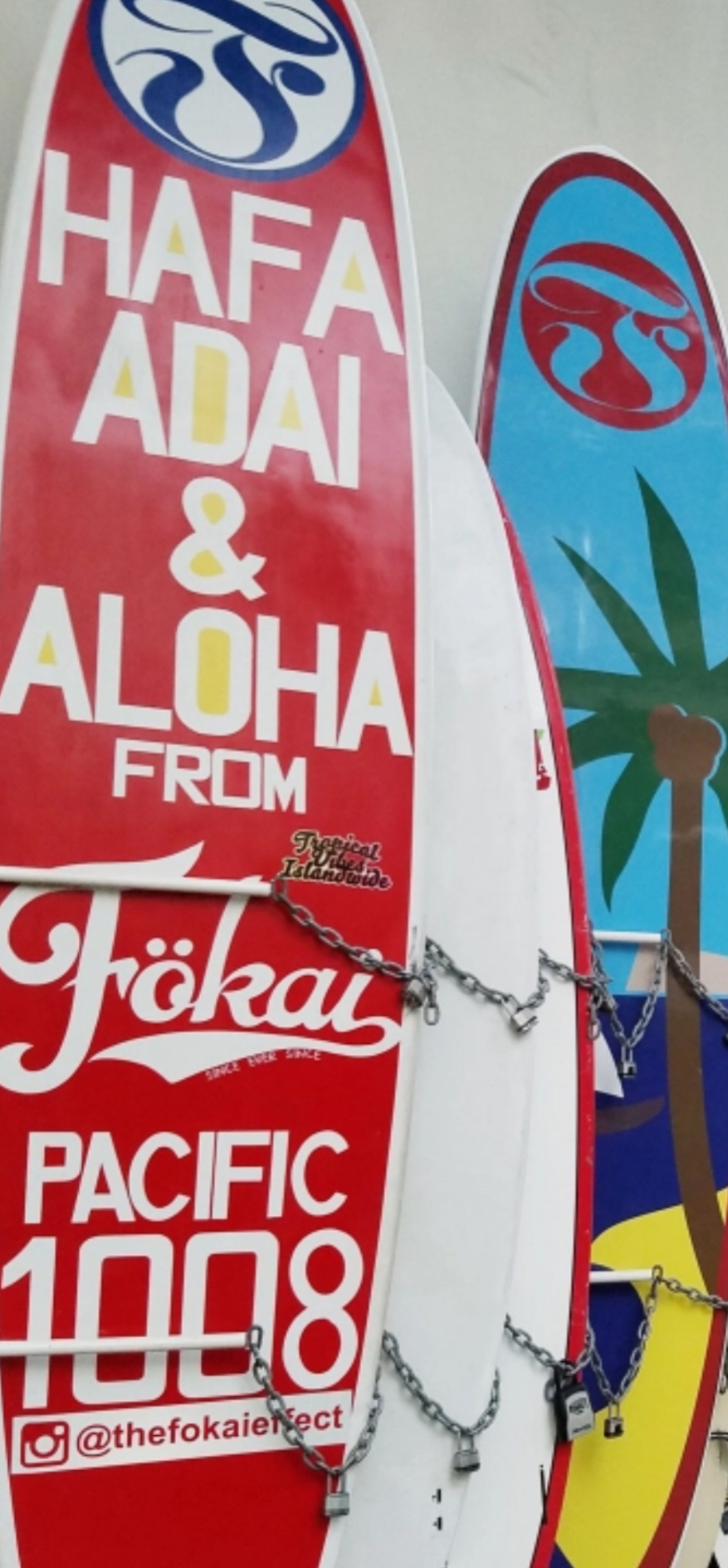
|
134147
|
Jeromyy
|
United States
Honolulu
|
|
|
—
|
Multilingual Hawaiʻi
|
|
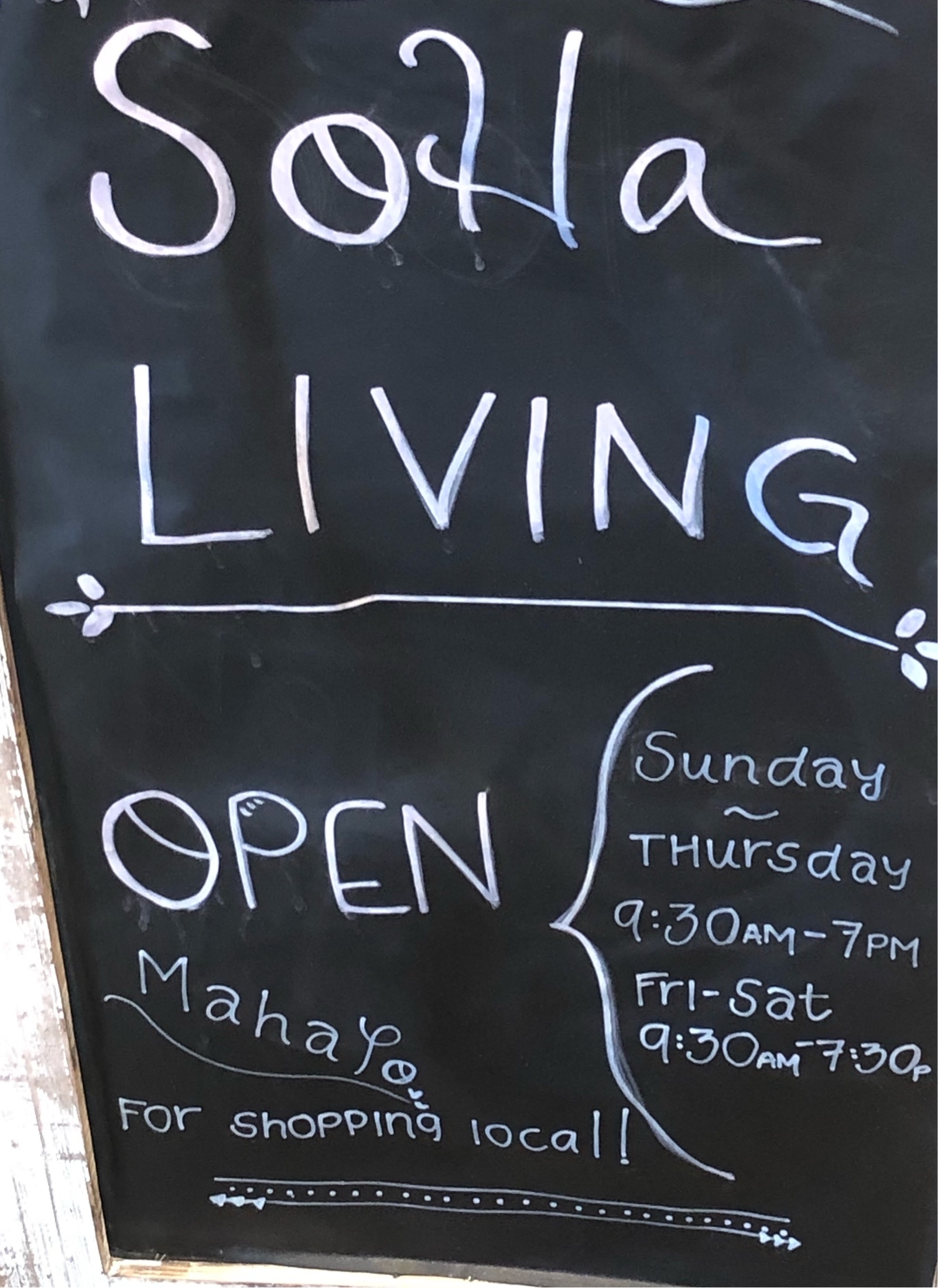
|
42499
|
|
United States
Kailua
|
|
|
SM
|
Multilingual Hawaiʻi
|
|
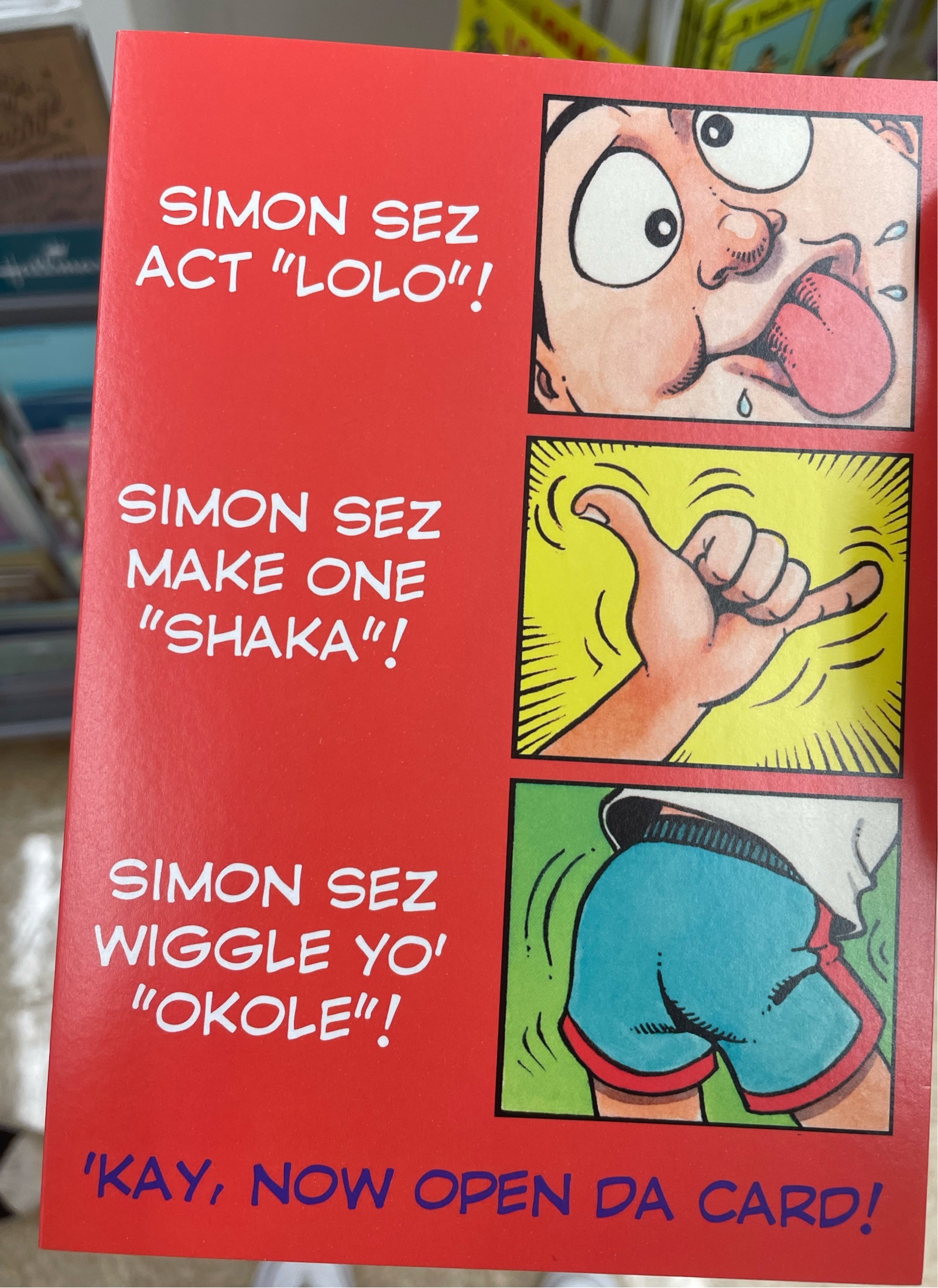
|
46083
|
|
United States
Aiea
|
|
|
EL-S Check up #2: Pidgin is being used on the card. All of the words are the same font and same size. The audience is those who are thinking of getting a family or friend a card for celebration. The domain is the general public. The card is just telling you some jokes, like you act crazy or shake your butt. Pidgin is used here to add topical humor.
|
Multilingual Hawaiʻi
|
|

|
134148
|
Jeromyy
|
United States
Honolulu
|
|
|
—
|
Multilingual Hawaiʻi
|
|
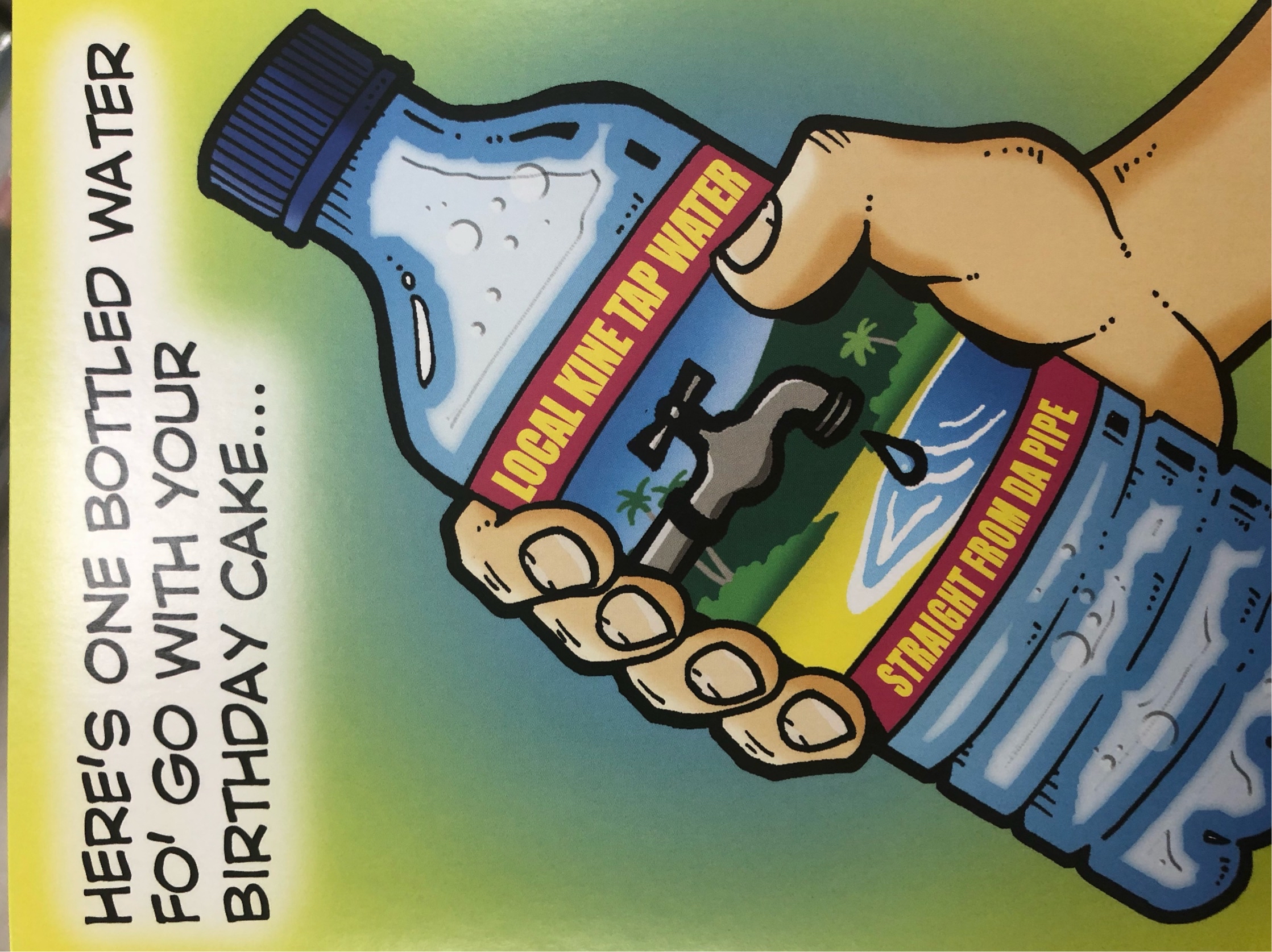
|
25092
|
|
United States
Honolulu
|
|
|
Birthday card at longs drugs. Symbolic authentic. J.A.S
|
Multilingual Hawaiʻi
|
|

|
42500
|
|
United States
Kailua
|
|
|
SM
|
Multilingual Hawaiʻi
|
|

|
134149
|
Jeromyy
|
United States
Honolulu
|
|
|
—
|
Multilingual Hawaiʻi
|
|
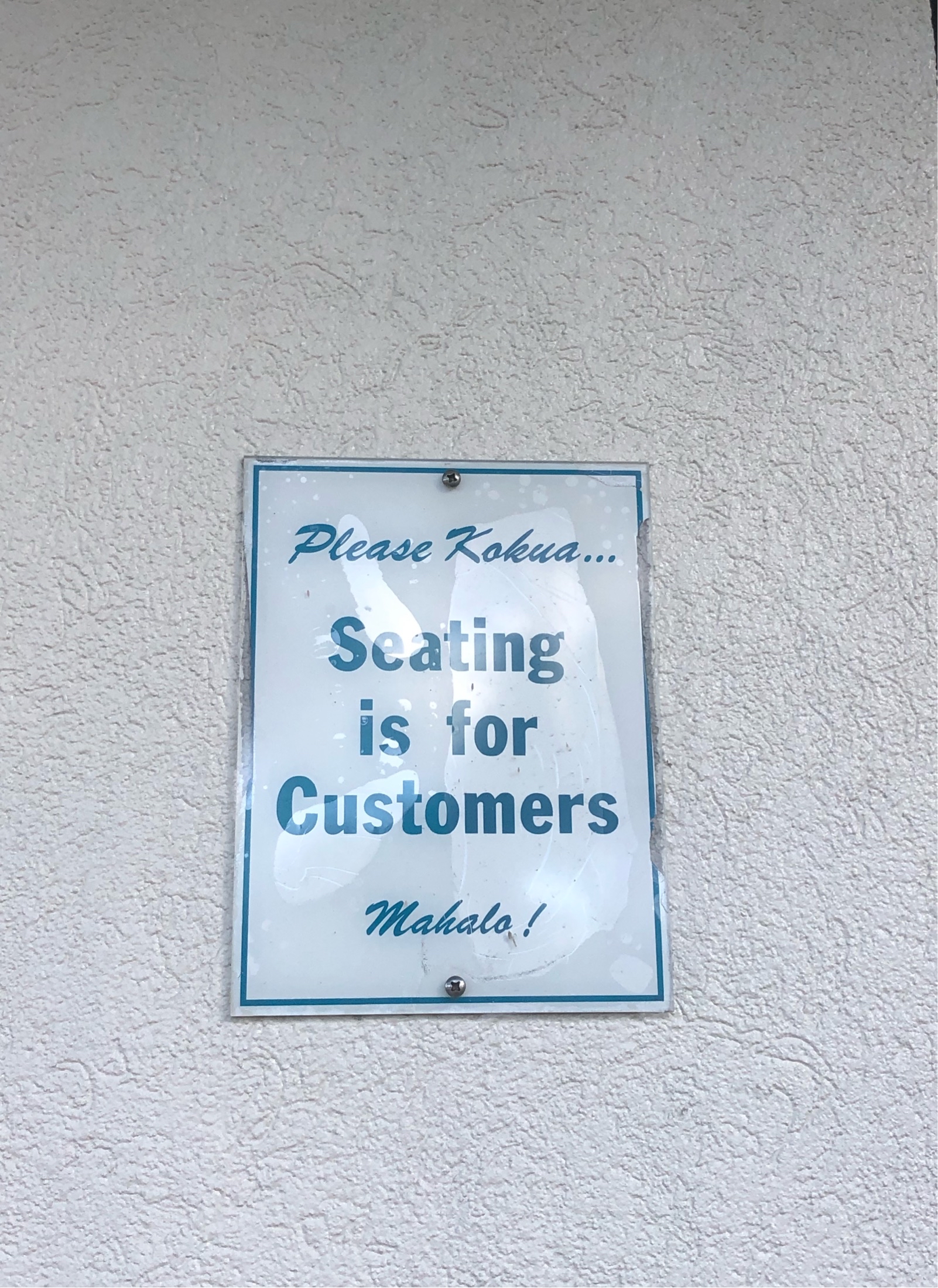
|
42501
|
|
United States
Kailua
|
|
|
SM
|
Multilingual Hawaiʻi
|
|